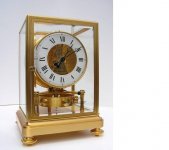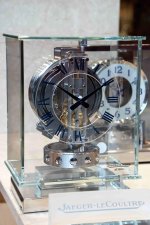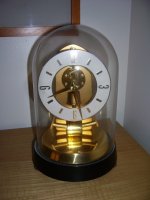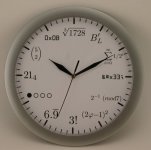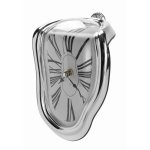You may be talking about thinks like this:
Gödel metric - Wikipedia, the free encyclopedia
Leaving aside some strange metric, there is a very funny story of how Einstein, prevented Gödel screw up ...
Kurt Gödel - Wikipedia, the free encyclopedia
Turning to the Observatory, I tell an anecdote.
In 1986 he passed the Comet Halley, major superpowers sent their probes, the only hit was Giotto, sent by the ESA.
The mission succeeded in approaching Halley's nucleus at a distance of 596 kilometers!
Guess who did the math...
Dr. Zenón Pereyra, at the Astronomical Observatory of Córdoba, Argentina.😎
In 1910, Argentina was in the first world, and our "Obser" was one of the few, if not the only "state of the art" in the southern hemisphere.
Measurements were preserved as well as the "Annalen der Physik"😀
Our watches are just decorative, for tourists ...😀
Last edited:
Nice picture. Reminds me modern opamp. 😀
This is High End:
An externally hosted image should be here but it was not working when we last tested it.
Schematic:
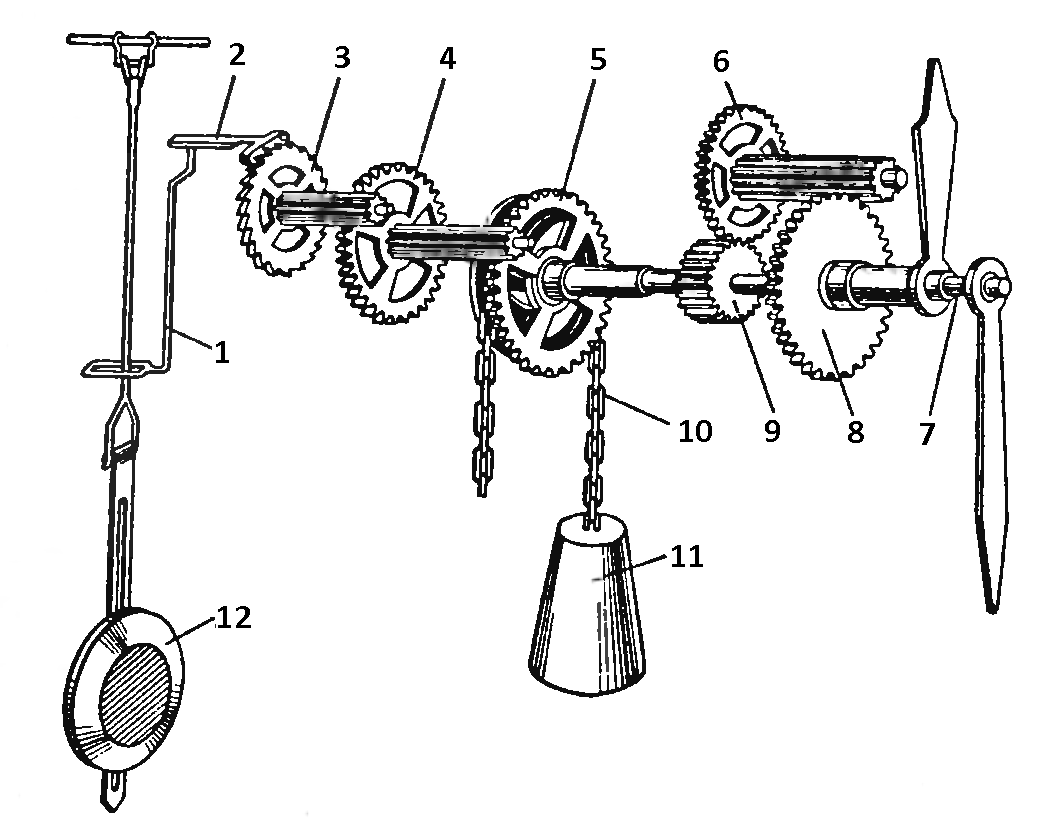
Nice.... but it's not very isochronous. Note the verge arbor (#2) is not coaxial with the pendulum mount. That means the pallets have a larger rotational angle than the pendulum. It should be the same length, even if offset, the crutch wire (#1) can be bent to accomodate.. Also, it's a recoil escapement, I hate those..as the pivots wear, the wheel to pinion meshing drifts out, and the recoil movement causes much more friction.😉
Your also missing the entire count side.😕 Taint nuttin there to tell the boids ta come out and sing!!!
It's called a persistance switch. For MRI's, the closed loop needs resistance in the single digit nano-ohm so that the main field is stable to 10 power -9.. It's really not easy to get that with mechanical surfaces like honkin contactors.The most fascinating thing was the small heating elements used as switches on the cryogenic coils . By heating locally a circuit is opened as the resistance goes from nothing to almost nothing . It was enough to allow current in as it prefers the zero resistance part of the unheated coil . Once cooled the switch is closed and the current is virtually constant for goodness knows how long ( I never asked ) . The coil is a hoop effectively with two lead-out wires . There is no brake in the hoop as a switch , just heat .
The big danger was working in the pit . Nitrogen would accumulate
Yah, ODH is a big issue with those gases. The drill here is, if you hear an incredibly loud whoosh, run in the opposite direction. Fast.
Cheers, jn
Last edited:
Magnets
I remember > 10 power 8 being said and guess to the 9 is what was said . At the time magnets were the big selling items and scanners left to others . The technical boss said we had sold some magnets to China for extracting iron from coal . I had to say I didn't beleive it . However he said it made the coal very much more valuable . Who knows? I said to my boss they will be cloning them . As the academic sort I think it never occurred to him ? Still money is money and they will buy them somewhere .
For testing the gradients I used the Armcron and a magnetometer ( Bartington ) . The graphs in X Y and Z look like sine-waves . I used an old DOS program for that which I think was the one used first in the world ( the very first scanner ) . Very easy to loose all the data . I took it home . Alas since my computer went wrong I lost it . I used it for any other things .
I remember > 10 power 8 being said and guess to the 9 is what was said . At the time magnets were the big selling items and scanners left to others . The technical boss said we had sold some magnets to China for extracting iron from coal . I had to say I didn't beleive it . However he said it made the coal very much more valuable . Who knows? I said to my boss they will be cloning them . As the academic sort I think it never occurred to him ? Still money is money and they will buy them somewhere .
For testing the gradients I used the Armcron and a magnetometer ( Bartington ) . The graphs in X Y and Z look like sine-waves . I used an old DOS program for that which I think was the one used first in the world ( the very first scanner ) . Very easy to loose all the data . I took it home . Alas since my computer went wrong I lost it . I used it for any other things .
My favorite clock
Atmos, an early example of energy harvesting.
BTW jn Jim Williams had a (BIG) mechanical cronometer from the Naval Observatory in his private collection, he claimed the pendulum was pure platinum and it was 1e-6 accurate. Unfortunately he was very private about his instrument collection, it was truly unbelievable he even had a galvanometer made by Lord Kelvin.
Atmos, an early example of energy harvesting.
BTW jn Jim Williams had a (BIG) mechanical cronometer from the Naval Observatory in his private collection, he claimed the pendulum was pure platinum and it was 1e-6 accurate. Unfortunately he was very private about his instrument collection, it was truly unbelievable he even had a galvanometer made by Lord Kelvin.
Attachments
Atmos, an early example of energy harvesting.
BTW jn Jim Williams had a (BIG) mechanical cronometer from the Naval Observatory in his private collection, he claimed the pendulum was pure platinum and it was 1e-6 accurate. Unfortunately he was very private about his instrument collection, it was truly unbelievable he even had a galvanometer made by Lord Kelvin.
Atmos clocks are just so cool.
Goodrich's book "modern clock", (written in 1905), talks about astronomical clocks accurate to 5 milliseconds per day. What I've always tried to figure out is, how did they know that??
Perhaps the bob was platinum? I would guess the rod as invar. I don't recall any extreme clocks as having a gridiron, but who knows.
jn
Perhaps the bob was platinum? I would guess the rod as invar. I don't recall any extreme clocks as having a gridiron, but who knows.
jn
You're probably right, I was just impressed by the size of the chunk. Among my father's effects were some platinum crucibles, they priced at $3500 just as scrap.
Nice.... but it's not very isochronous. Note the verge arbor (#2) is not coaxial with the pendulum mount. That means the pallets have a larger rotational angle than the pendulum. It should be the same length, even if offset, the crutch wire (#1) can be bent to accomodate.. Also, it's a recoil escapement, I hate those..as the pivots wear, the wheel to pinion meshing drifts out, and the recoil movement causes much more friction.😉
Right, schematic can be improved. But anyway it is High-end: minimum details and overall performance depends on 2'nd order law of gravitation. 😀
Right, schematic can be improved. But anyway it is High-end: minimum details and overall performance depends on 2'nd order law of gravitation. 😀
2nd order law of gravitation?? Is that the toast butter side down law?
jn
Those folks there into the PP are not deserve these pictures.😀
Here, however, are very nice people, so here I share these images:🙂
https://skydrive.live.com/?sc=photos&cid=e894cb7d50b65fbf#cid=E894CB7D50B65FBF&id=E894CB7D50B65FBF%21580&sc=photos
Here, however, are very nice people, so here I share these images:🙂
https://skydrive.live.com/?sc=photos&cid=e894cb7d50b65fbf#cid=E894CB7D50B65FBF&id=E894CB7D50B65FBF%21580&sc=photos
Attachments
2nd order law of gravitation?? Is that the toast butter side down law?
Organic butter! Pasture feed on a freshly growing grass. 😉
I too love a nice clock. But when I needed something to keep time, I just bought a rubidium clock. Not pretty. 1U rack and a few numbers on the front of it. You would not believe the amount of paperwork I had to to because it was radioactive, and would eventually be end of lifed. I keep one real clock around. Pretty ordinary, mid 60's German clock. I like it anyway.
Attachments
One should not forget the third order .
"In an Ω0 = 1 universe, within the classical Eulerian theory of gravitational instability, the redshift evolution of a peculiar velocity field in a region with arbitrary initial density contrast is derived, for the first time, in real space and third-order perturbation theory. A vector proportional to the gravitational acceleration can also be expanded in terms of the redshift and the initial density contrast. The results are applied to isolated (spherically symmetric) superclusters and voids. Using reasonable models and the exact solution, we tested the accuracy of three (linear, second order, and third order) approaches. A numerical example showed that the relative error of the third-order solutions (average density contrast and peculiar velocity) is less than 5% when 0 < δ lesssim 1. In another example, a relative error was derived (at -1 < δ < 0) of less than 10% (average density contrast) to 2% (peculiar velocity). On the other hand, second-order environmental dynamical terms (supercluster-supercluster, supercluster-void, and void-void complexes) have been also obtained. In the complexes (which contain two large-scale structures with spherical symmetry at recombination), the global peculiar flow can be described as a natural (but not trivial) superposition of two effective peculiar flows. Given a member of a complex, its effective peculiar velocity field is the sum of a spherically symmetric radial field (which is equal to the peculiar velocity field obtained from an isolated evolution) and an environmental (due to the interaction with the companion) field. In general, the external tides can be comparable to the internal ones. The imprint of the environment fields in the mean radial effective peculiar flows is also studied. "
Now that's something to clear the pub with . With speakers one should ignore the third order ? However the fourth .........
Love the clocks .
"In an Ω0 = 1 universe, within the classical Eulerian theory of gravitational instability, the redshift evolution of a peculiar velocity field in a region with arbitrary initial density contrast is derived, for the first time, in real space and third-order perturbation theory. A vector proportional to the gravitational acceleration can also be expanded in terms of the redshift and the initial density contrast. The results are applied to isolated (spherically symmetric) superclusters and voids. Using reasonable models and the exact solution, we tested the accuracy of three (linear, second order, and third order) approaches. A numerical example showed that the relative error of the third-order solutions (average density contrast and peculiar velocity) is less than 5% when 0 < δ lesssim 1. In another example, a relative error was derived (at -1 < δ < 0) of less than 10% (average density contrast) to 2% (peculiar velocity). On the other hand, second-order environmental dynamical terms (supercluster-supercluster, supercluster-void, and void-void complexes) have been also obtained. In the complexes (which contain two large-scale structures with spherical symmetry at recombination), the global peculiar flow can be described as a natural (but not trivial) superposition of two effective peculiar flows. Given a member of a complex, its effective peculiar velocity field is the sum of a spherically symmetric radial field (which is equal to the peculiar velocity field obtained from an isolated evolution) and an environmental (due to the interaction with the companion) field. In general, the external tides can be comparable to the internal ones. The imprint of the environment fields in the mean radial effective peculiar flows is also studied. "
Now that's something to clear the pub with . With speakers one should ignore the third order ? However the fourth .........
Love the clocks .
Two of my favorites
Love those. One I can actually see, one is just sick enough for me. Where on earth ( or elsewhere) did you get it?
Love those. One I can actually see, one is just sick enough for me. Where on earth ( or elsewhere) did you get it?
Years ago I want make a clock that turn "counter clockwise", just to say something about "conventions in physics"😀
Someone anticipated me.🙄
Converse boil the ocean
Math clock for the geeky
I think both are easy to build, easier than an amplifier...😉
One that shows the gravitational effects in time😀
Attachments
Last edited:
My wristwatch is the second one. I didn't know they also had a wall clock version.Two of my favorites
I'm refurbishing a small pocketwatch, about an inch in diameter, and making a wooden gear wallclock.
jn
I understand that's the gravitational effects of dropping acid.
Either that, or perhaps dropping 15 dollars for part #32018 in a clock parts catalog..page 147..
jn
My wristwatch is the second one. I didn't know they also had a wall clock version.
I'm refurbishing a small pocketwatch, about an inch in diameter, and making a wooden gear wallclock.
jn
You guys want a cool watch?
An externally hosted image should be here but it was not working when we last tested it.
- Status
- Not open for further replies.
- Home
- Member Areas
- The Lounge
- The speed of light is NOT constant
